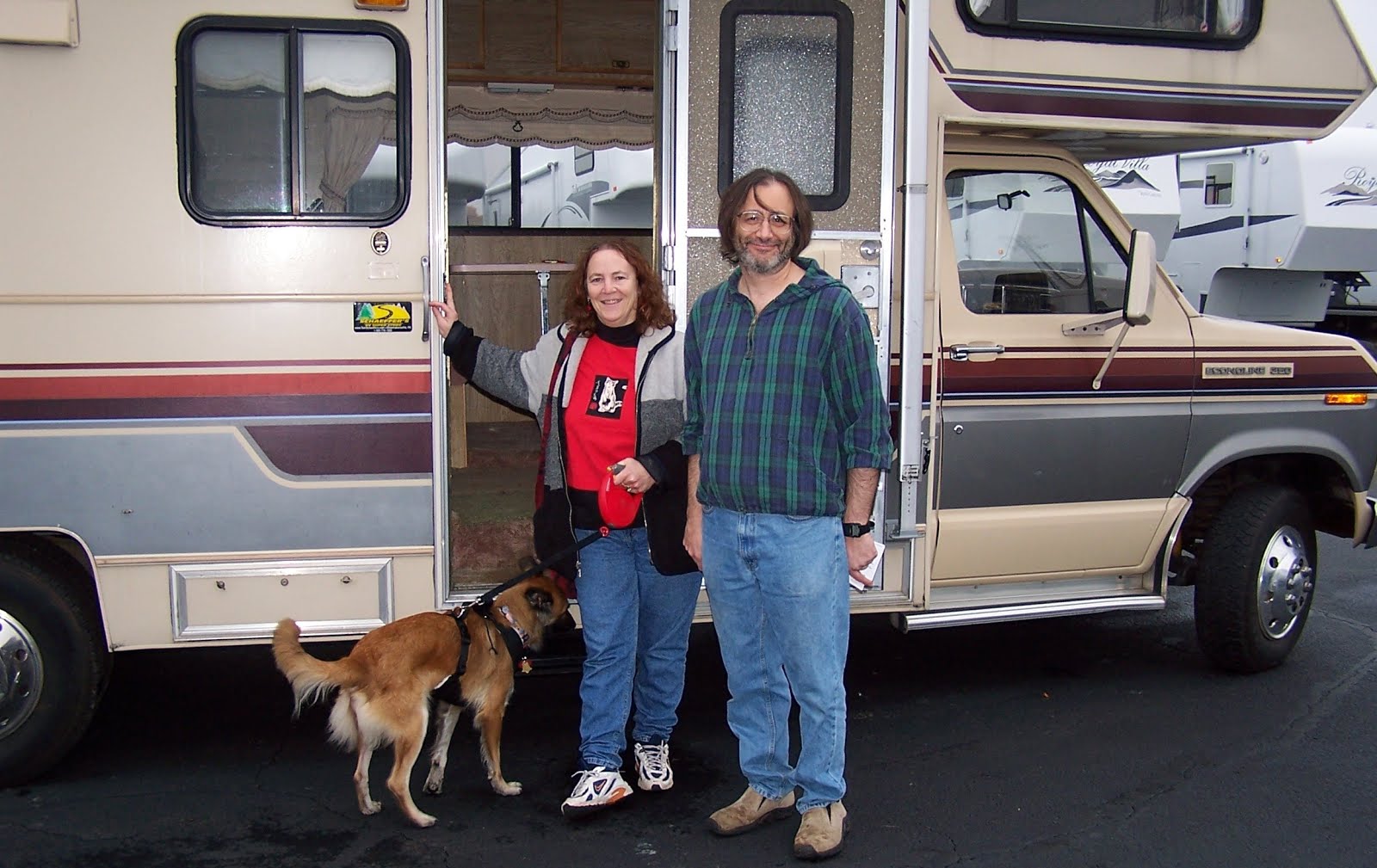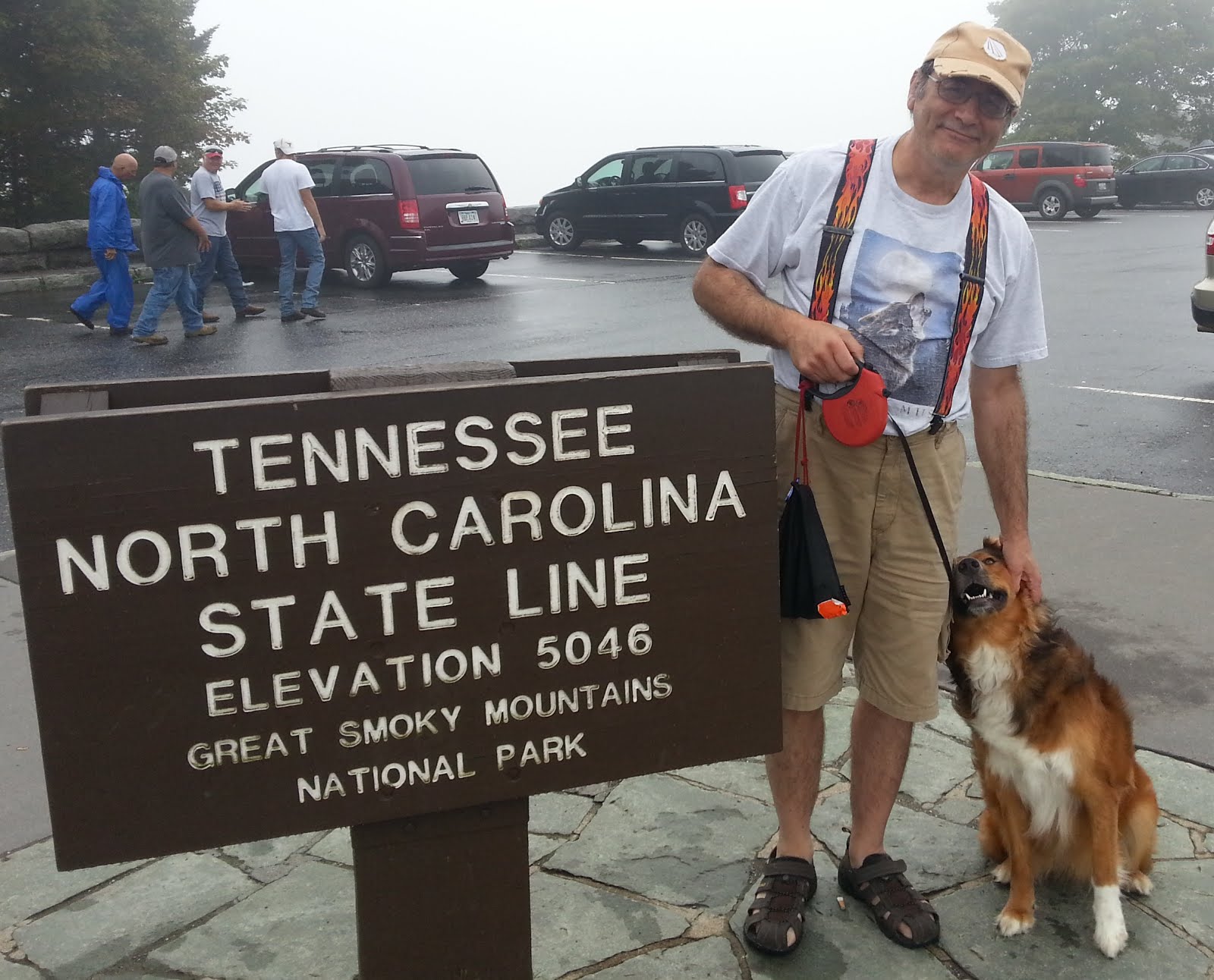 |
| Deb & Joe at Marymere Falls |
2019-09-21 Saturday
Wow, today was one of those really GREAT days!! Just a fantastic day from start to finish.
The first thing of the morning was dealing with the Michigan State football game. We are in a media hole, apparently. As soon as we arrived, Joe was looking at our connections for television and realized we had a problem. There is no local television reception here (we checked with the campground owner.) There is also no cable at the campground which we could have hooked into. We've never owned a satellite dish, and finally, our usual approach, it seems that ABC TV does not live-stream to this part of Washington. That meant that all our options for receiving a television picture of the Spartans game were out.
Yesterday afternoon, I suggested an idea to Joe: What if we Skyped to someone, and they put their computer so that the camera was facing their television. Would I be able to see the television screen and watch the game that way? Crazy as it sounds, he said that WOULD work. So I asked Beth if she would skype with me. But by this morning, she had totally forgotten--I called her at 8:30 a.m. my time (11:30 EDT-- the game was scheduled for noon) and I could tell that I'd be disrupting their happy family morning together. So I called Jimmy, figuring he'd "get it" about football.
 |
| Aimee's Sunroom with computer set up for football |
Jim, being the great guy that he is, didn't even COMMENT on the situation. He just went downstairs, got Aimee's laptop (she wasn't home), and clicked on Skype on her machine. I, meanwhile, was struggling to get skype on MY machine-- it just was not working. Then I noticed that the Skype icon was on the desktop, and when I clicked it, I was instantly logged in as Joe. So I called Jim on Skype (we were on the phone at the same time as we did this), he answered, he aimed the computer's camera at his ginormous TV, pushed it closer, and voila! We were just in time for the kickoff!!! I was absolutely beside myself with feeling smug! Even more fun for me, I turned off the sound from the computer, and listened to the game broadcast over Spartan Sports radio network--my fallback position if I could not get the game on tv (but football loses an awful lot when it's just over the radio.)
 |
| Tree roots |
So I watched the entire game on Skype (Jim went back to whatever he was doing--he didn't need to stick around), feeling, as I said, pleased as punch. And, MSU won, so it was even more gratifying, especially considering last week's debacle. (AND, not to engage in too much shadenfreude, but Michigan was PUMMELED by Wisconsin, so that completed the football portion of my day very nicely.)
All of this activity took place beginning at 9:00a.m. Pacific Time, meaning that when the game ended, it was only 12:30 here. Joey and I had a hasty lunch, through our "traveling gear" into the Jeep, and with Cassie, we headed off for adventure in Olympic National Park. Nice to get football out of the way early so there's still time to do other stuff
.
Our activity of choice turned out to be a hike to the Marymere waterfall. A ranger told me it was mostly easy, and the plus was it goes through old-growth forest to get there. The sign said it was 1.5 miles roundtrip, mostly gently going uphill, but with about 1/8th of a mile with a "steep" ascent. We were not sure what "steep" meant, but figured we would go as far as we could and see. We haven't done much hiking because Joe's legs are still pretty weak since his surgery, but he was determined to do it.
 |
| Long way down |
The forest we walked through was just awesome! We went VERY slowly, taking our time not just to spare our energy, but because so much of the foliage and trees were so beautiful and interesting. I took a bunch of photos, many of which are here. The intense greens of the forest included the thick drooping moss which covered many of the tree branches like a carpet. There were redwoods, and the ones which were down and decomposing were amazing shades of reddish brown, just gorgeous. There were fascinating tangled roots, and moss and lichen growing on the tree bark. Other than a chipmunk, a squirrel (it was much smaller and cuter than our gray squirrels, being two shades of brown), and a banana slug, we saw no "animals" other than, of course, the lichen (i think they are classified as animal?) But we just loved going slowly and looking at everything so carefully.
We finally got to the rushing stream which came from the waterfall, and then the "steep" part. Yes, it was VERY steep-- going up there were lots of stairs, and they were high, uneven, often slippery, and not easy at all. Joe was a trooper, and climbed the ENTIRE thing. At the top, the waterfall was very pretty, but better than that was just the accomplishment of GETTING there. We felt quite proud of ourselves. The way down was much easier, I thought, and so was the rest of the hike faster (probably because both of our cameras had lost all their batteries so we couldn't take photos anymore.) All in all, I think the hike took us two hours, longer than for younger, faster people, but we were satisfied with our afternoon's adventure.

We were also both exhausted and not quite ready to go home. So we continued on along US 101 toward Sol Duc Hot Springs, which were supposedly 16 miles but an hour's drive. As we passed another turnout for a campground, I impetuously turned in to see what it was like. It was one of the ONP campgrounds (first come, first served) and it was really pretty! It was also pretty uneven almost everywhere, but there were a number of level-ish sites that we thought we could manage. As we continued on the road, we were brainstorming about the next couple of days, something I started yesterday and had still not 100% decided about. The encouraging thing is that there were a number of empty campsites, even tonight, a Saturday. And many of the ones which were occupied, we could see the people were leaving tomorrow. So we feel a lot more encouraged about finding a spot there.
About 15 minutes later, we reached the Sol Duc turnoff. As we went through the gate, I asked the ranger, "Is there anything we can do here besides hiking? We are exhausted." He smiled and said, "Sure! Go to the Salmon Cascades, you can see the salmon!" We were surprised to hear it was a definite thing (the ranger yesterday had said that "maybe we'd be lucky" to see some salmon, although it was "a little early." So we turned off to see the salmon.
Wow, it was FANTASTIC. I could have stayed there for hours--Joey had to drag me away. The Sol Duc river at that point was rushing over the rocks, forming a small but very fast and rough (at least to my eyes) cascade, and there were salmon leaping up trying to get back to their spawning area! It was fascinating, and exciting, and just a "wow moment" to watch the wild salmon leaping out of the water and hurling themselves toward the rushing waterfalls. We'd seen them do this on a fish ladder by a dam, but never in the wild this way.
 |
| Very old tree (also very big) |
There were some "stepped" rocks which offered sort of a natural fish ladder, and several times we saw a fish end up on the bottom "step" and swim UP the steps to the top. There, there was a small pool (we thought of it as a "holding area", where they would try to enter yet another rushing area over the adjacent rocks to continue moving up. We could see several fish in that small area all the time, sometimes they'd get into a big flapping mess--and then one would leave the area, moving into the tumbling rushing water going right by it.
Lots of times, we'd see a fish hurl itself up, only to hit against one of the slick rocks and slide back down. I wasn't the only one yelling encouragement (at least, I don't THINK I was!) One time, there was a fish just lying in the lowest "step" for at least 10 or so minutes. I was afraid he'd given himself a concussion or something jumping that far, but after a bit, suddenly he started swimming up the natural ladder area to the next level. I guess he was just resting! Other times, we'd see a fish just jump into the air, almost straight up, and splash down again, nowhere near reaching the next level of the cascade.
As I said, I could have stayed there for hours. (Unfortunately, it was near dusk, and my camera's zoom wasn't good enough to get any good photos.) After about 5-10 minutes, Joey went back to get Cassie, and took her for a walk. I hardly noticed he was gone, I just couldn't stop watching the water (I was kind of mesmerized) and the fish. It was just fascinating. By the time he dragged me away, we'd easily been there 30 minutes or so, and he pointed out that a) we were concerned about driving back home in the dark (the road through the park to this point, from even before the hiking area, was another serpentine road with no shoulders) and b) he would need to eat some real food soon, not just the snacks we'd brought. So we turned around and headed back to Port Angeles. We stopped at a Mexican restaurant for dinner, and it really hit the spot! And then we drove home to the RV.

On the way, we decided that rather than stay at this KOA any more nights, we would leave tomorrow morning as scheduled. Unfortunately, it's supposed to be raining all morning and into the afternoon, which puts a kibosh on many park activities. So the current plan is to leave and go get some things we need at the store, then drive to the local theater (in two vehicles--we won't hook up the Jeep.) We want to catch the 1:15 show of Downton Abbey, which is playing there now. Then after the movie, we will go to the Fairholme Campground we'd seen earlier, which will put us about 40 miles (at least an hour) closer to the western parts of the park, which we want to see on Monday and Tuesday. Plus the campground will be a LOT prettier! Only problem is, it will have absolutely NO phone reception. We will have to work around that, like we did in the Cascades. It's only for two days, and we won't be in the campground most of the time. So it should work out, and be a lot more enjoyable than two more nights here at the KOA, although the KOA is actually the prettiest one we've ever seen. Nevertheless, we don't love it, and it's expensive, so we are ready to move on.
 |
| Looking up to the sky |
|
|
 |
| Variety of plants in hollow tree |
.




























































